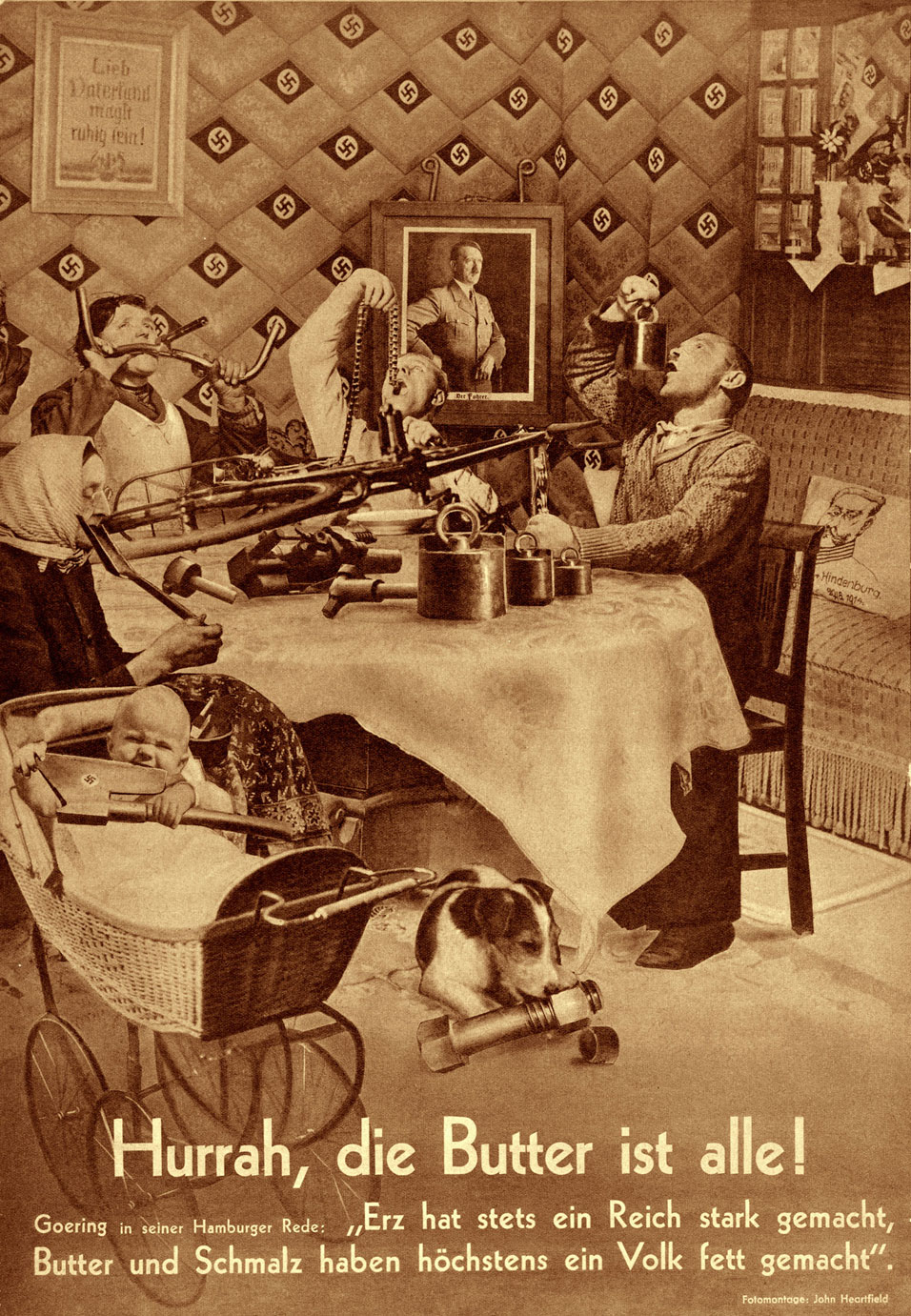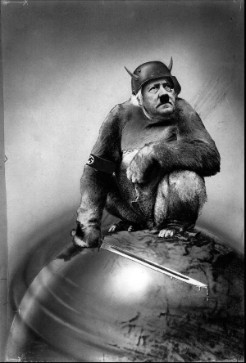John Heartfield was one of the most popular Dadaism artists during it's time. He was born June 19th, 1891 in Berlin under the name of Helmut Herzfeld. He changed his name to Heartfield in 1916 to criticize the rabid nationalism and anti-British sentiment present in Germany during world war 1. He was showing early signs of painting skills and went to art school in 1908. He didn't paint many real paintings, but mostly photomontage pictures that were in a lot of german magazines and even one on the cover of a book. He spent most of his career opposing Hitler. His works often related to Hitler and other Nazi symbols like swastikas in order for him to show other people how bad what was going on really was. Some of his popular works include: "The hand had 5 Fingers" and "Hurrah! Die Butter Ist Alle" (Translation: Hurray! The butter is gone!). His art works were not liked by the Nazi's though and in 1934, they deprived him of German citizenship. Heartfield wisely fled to London, England where he lived in exile until returning to Germany in 1950. He never stopped painting and continued after he had returned to Germany until he died on April 26, 1968. Some of John Heartfield's pieces: |
||||
The hand has 5 fingers (1928)  The painting "The hand has 5 fingers" was painted by John Heartfield in 1928. Heartfield was a supporter of the Communist party which was "list 5" on the election ballet. The hand in the picture represents the number 5 and the text translates to " The hand has 5 fingers with 5 you seize the enemy. Vote list 5 Communist party." There wasn't really a point to this picture besides trying to get people to vote for the number 5 Communist party. |
Hurray the Butter is Gone! (1935)  The painting " Hurrah, die, Butter ist Alle!" or "Hurray! The butter is gone!" was painted by John Heartfield in 1935. The painting is a parody of propaganda and the quote at the bottom says "Iron has always made a nation strong butter and lard have only made the people fat". Heartfield was referring to the food shortages during that time. The germans used much more iron for their enemies than food for eating. |
And Yet it Moves (1943)  The painting "And yet it moves" was painted by John Heartfield in 1943. The painting pretty much is showing that even with what was going on in Germany and how many people were going hungry and dying, the world was still turning. Hitler is on top of the Earth to show that the world still turns even with the weight of what Hitler's done sitting on top of it. |
||
